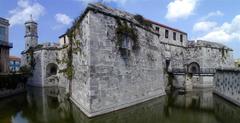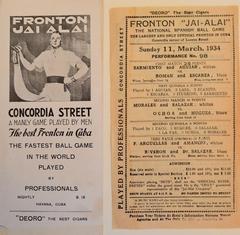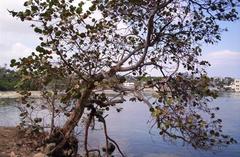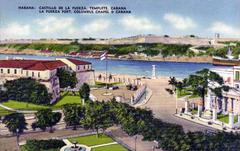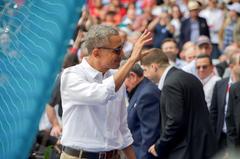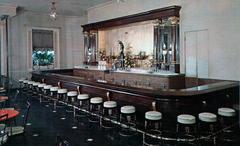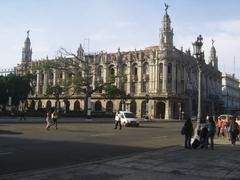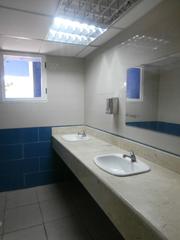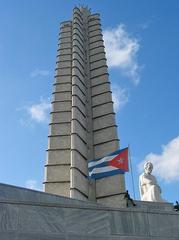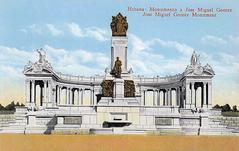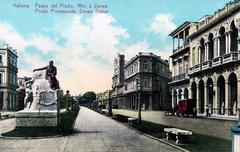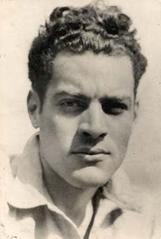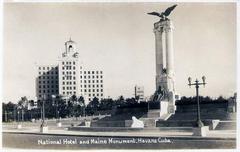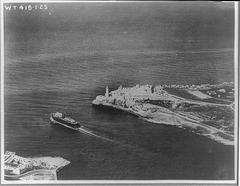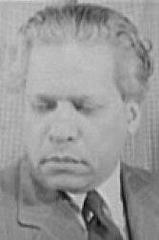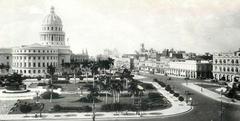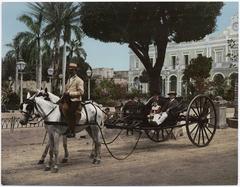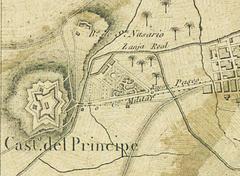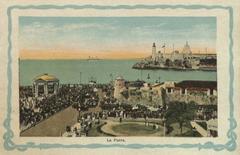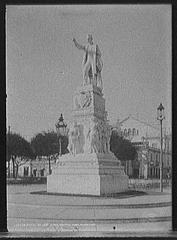
Polytechnic José Antonio Echeverría (CUJAE) Visiting Guide: Havana’s Historical and Architectural Landmark
Date: 04/07/2025
Introduction
Located in the vibrant Marianao district of Havana, the Polytechnic José Antonio Echeverría (CUJAE) stands as a testament to Cuba’s post-revolutionary commitment to educational advancement and innovative architecture. Established in the early 1960s, CUJAE was envisioned as both a center for technological excellence and a symbol of national progress. Today, it is recognized as Cuba’s preeminent technological university and an architectural landmark, renowned for its Cuban modernist design and lush, integrated landscaping.
A visit to CUJAE offers more than an academic experience; it’s an immersion into Cuban history, revolutionary spirit, and cultural vitality. The university is named after José Antonio Echeverría, a celebrated student leader and architect whose activism and sacrifice embody the ideals of Cuba’s transformative era. Whether you are passionate about architecture, interested in Cuba’s revolutionary history, or simply exploring Havana’s educational and cultural sites, CUJAE provides a unique window into the nation’s legacy.
This comprehensive guide details CUJAE’s origins, campus architecture, visitor amenities, travel tips, and nearby attractions. To ensure you make the most of your visit, consult resources like the CUJAE official website, Wikipedia, and AllUniversity.info.
Table of Contents
- Overview & Significance
- History and Development
- Campus Architecture and Cultural Value
- Visiting CUJAE: Key Information
- José Antonio Echeverría Monument: Historical Context and Visitor Guide
- Nearby Attractions
- Travel and Practical Tips
- Frequently Asked Questions (FAQs)
- Conclusion & Recommendations
- Sources
Overview & Significance
CUJAE is not only Cuba’s largest technological university but also a pillar of the country’s educational and architectural heritage. Its campus is a showcase of Cuban modernism, blending robust concrete forms with tropical landscaping to create a harmonious academic environment. CUJAE’s contributions to engineering, architecture, and national development are widely recognized, making it a must-visit for those seeking to understand Cuba’s educational and revolutionary legacy.
History and Development
Founding and Early Years (1960s–1970s)
CUJAE traces its origins to 1960, when the Faculty of Technology was established at the University of Havana in response to the urgent need for engineers and architects after the Cuban Revolution (Wikipedia). In 1962, the Higher Technological Institute of Havana was founded, and soon after, a purpose-built campus was designed by architect Humberto Alonso and team, incorporating modernist principles and tropical landscaping (AllUniversity.info). The university was named in honor of José Antonio Echeverría, who was martyred in 1957 for his revolutionary activism.
Growth and Academic Excellence (1980s–1990s)
Over the next two decades, CUJAE expanded rapidly, developing more than forty buildings across nearly 400,000 square meters. The university became Cuba’s preeminent center for technical training, research, and innovation (Wikipedia). Its graduates contributed to major national projects in renewable energy, infrastructure, and disaster risk management, earning CUJAE recognition throughout Latin America (QS Top Universities). Despite the economic crisis of the 1990s, CUJAE upheld its standards and adapted to meet Cuba’s evolving needs.
Modernization and Recognition (2000s–Present)
In 2016, CUJAE officially became the Technological University of Havana “José Antonio Echeverría,” reflecting its broad academic scope (UniRank). It now offers a comprehensive range of undergraduate and graduate programs across seven faculties, serving more than 10,000 students. In 2017, the university earned the highest national accreditation for academic excellence (Wikipedia). Recent years have seen substantial renovations, with modernized classrooms, laboratories, and digital infrastructure (AllUniversity.info). In 2024, CUJAE’s 60th anniversary was celebrated with major events and its designation as a national monument (Cubasi).
Campus Architecture and Cultural Value
CUJAE’s campus is a hallmark of Cuban modernist architecture. Designed for functionality and climate adaptation, the buildings feature clean lines, modular concrete forms, and broad windows, with shaded walkways and open courtyards that encourage community interaction. The main entrance, Faculty of Architecture, and expansive green spaces are particularly notable. Renovations between 2017 and 2021 have preserved the campus’s heritage while integrating new technology and amenities (AllUniversity.info, CiberCuba).
Visiting CUJAE: Key Information
Visiting Hours, Admission, and Tours
- General Hours: Monday–Friday, 8:00 AM–6:00 PM
- Admission: Free; registration required at the main entrance with valid ID
- Guided Tours: Available by prior arrangement through CUJAE’s public relations office ([email protected], +53 7 204 1234). Tours highlight architectural features, historical milestones, and campus life.
Accessibility and Amenities
- Wheelchair Access: Most campus areas are accessible via ramps and adapted facilities.
- Food & Refreshments: The Scholarship Dining Hall, new dining venues, and mobile kiosks offer Cuban cuisine and snacks.
- Facilities: Restrooms, commercial shops, and student-run kiosks are available in central zones.
Campus Map and Highlights
- Main Entrance & Information Desk: Obtain campus maps and visitor guidance.
- Faculty of Architecture: Architectural showcase near the entrance.
- Courtyards & Walkways: Designed for natural ventilation and social interaction.
- Outdoor Art & Monuments: Statues and plaques honoring José Antonio Echeverría and other Cuban luminaries.
Events and Academic Life
Public academic and cultural events are regularly held, including major conventions like the Convención Científica de Ingeniería y Arquitectura (CCIA). Check CUJAE’s events page for schedules and registration requirements.
José Antonio Echeverría Monument: Historical Context and Visitor Guide
Located in Marianao, the José Antonio Echeverría Monument is a significant site for those interested in Cuban revolutionary history. The monument features a striking statue and informative displays about Echeverría’s life and contributions. Admission is free, with guided tours available through the Havana Tourism Office. The site is wheelchair accessible, open daily from 9:00 AM to 6:00 PM, and hosts special commemorative events throughout the year.
Tips:
- Wear comfortable shoes; the surrounding area is best explored on foot.
- Combine your visit with a tour of Marianao’s local museums and landmarks.
Nearby Attractions
Enhance your visit to CUJAE by exploring these nearby Havana sites:
- University of Havana: A historical institution in the Vedado district.
- Malecón: The iconic waterfront promenade.
- National Botanical Garden: Showcasing Cuba’s plant diversity.
- Parque Lenin: Popular for outdoor recreation.
- Marianao Cultural Center: Offers local arts and cultural insights.
- Plaza de la Revolución: Cuba’s political and historical heart.
Travel and Practical Tips
- Getting There: CUJAE is about 10 km from central Havana; taxis or ride-hailing services are recommended due to irregular bus schedules.
- Language: Spanish is predominant; some staff and students speak English.
- Dress Code: Modest, comfortable attire is advised.
- Connectivity: Wi-Fi is limited; consider local SIM cards for mobile data.
- Safety: The area is generally safe; standard precautions apply.
- Souvenirs: University-branded items are sometimes available during events.
Frequently Asked Questions (FAQs)
Q: Is there an entrance fee to visit CUJAE?
A: No, campus access is free. Some events may require tickets or registration.
Q: What are the visiting hours?
A: Monday–Friday, 8:00 AM–6:00 PM. Weekend access is limited to special events.
Q: How do I arrange a guided tour?
A: Email [email protected] or call +53 7 204 1234 in advance.
Q: Are all facilities open to tourists?
A: Academic areas are generally restricted; dining and public spaces may be accessed during events.
Q: Can I take photographs?
A: Yes, in outdoor areas. For indoor photos, seek permission.
Q: Is the university accessible for those with disabilities?
A: Most areas are accessible, but older buildings may have limitations. Contact the university for specific arrangements.
Conclusion & Recommendations
Visiting CUJAE is an opportunity to experience the intersection of Cuban history, education, and architecture. From its revolutionary origins to its modern achievements, the campus reflects the nation’s aspirations and resilience. Whether you are attending a conference, joining a guided tour, or discovering Havana’s wider cultural landscape, CUJAE offers a memorable and enriching experience.
For the best visit:
- Check CUJAE’s official website for the latest visitor information and event updates.
- Plan ahead for tours and special events.
- Download the Audiala app for interactive guides and campus maps.
- Explore nearby historical and cultural sites to complete your Havana itinerary.
Sources
- Polytechnic José Antonio Echeverría (CUJAE) – Wikipedia
- AllUniversity.info – Polytechnic University José Antonio Echeverría Overview
- QS Top Universities – Technological University of Havana José Antonio Echeverría
- UniRank – Technological University of Havana José Antonio Echeverría Profile
- Cubasi – Cuba’s CUJAE Closes 60th Anniversary Celebrations
- CUJAE Official Website
- Havana Tourism Office – José Antonio Echeverría Monument Visitor Guide
- Audiala App Download Page
- CiberCuba – CUJAE Leasing Spaces for Private Businesses


